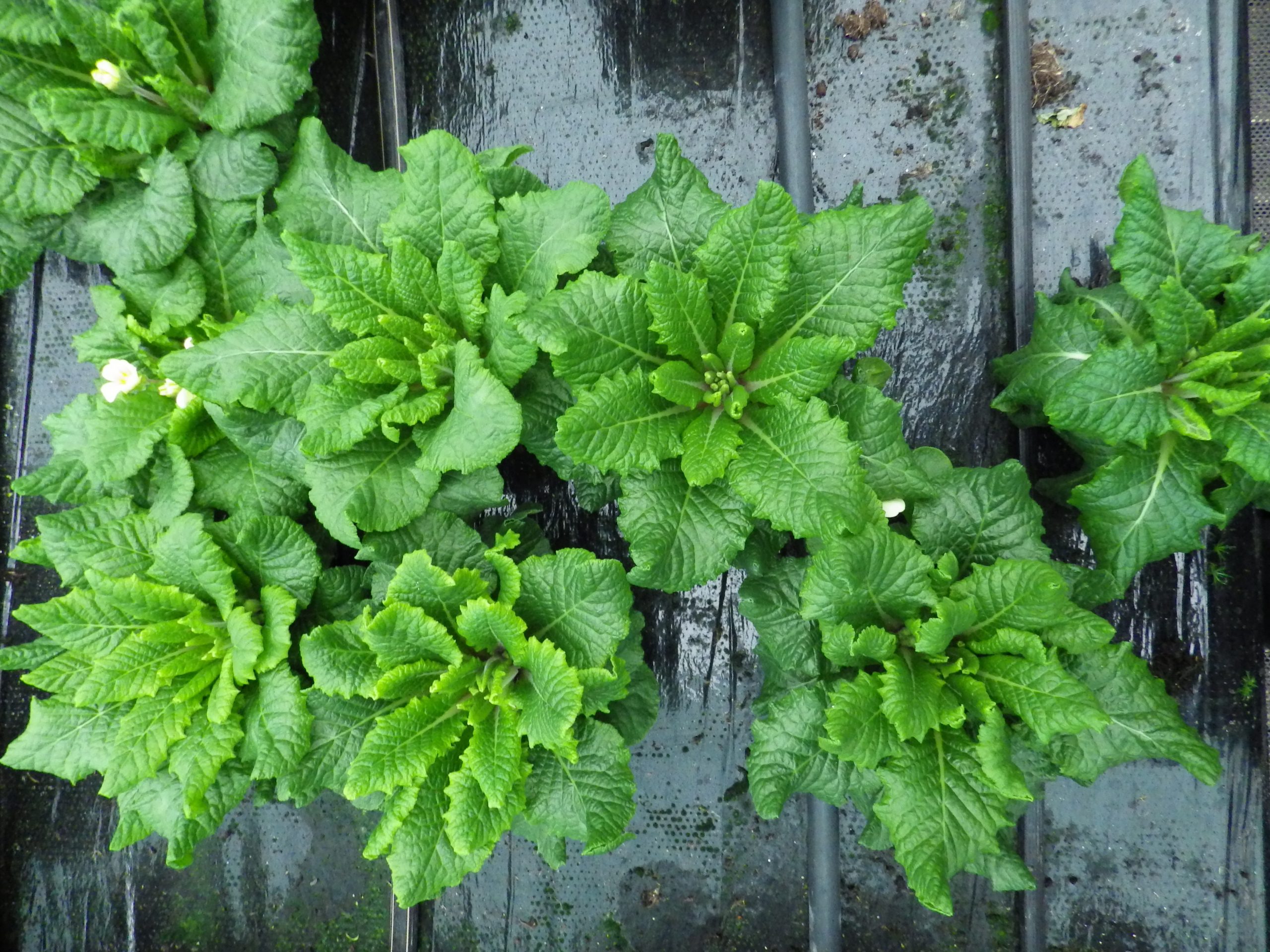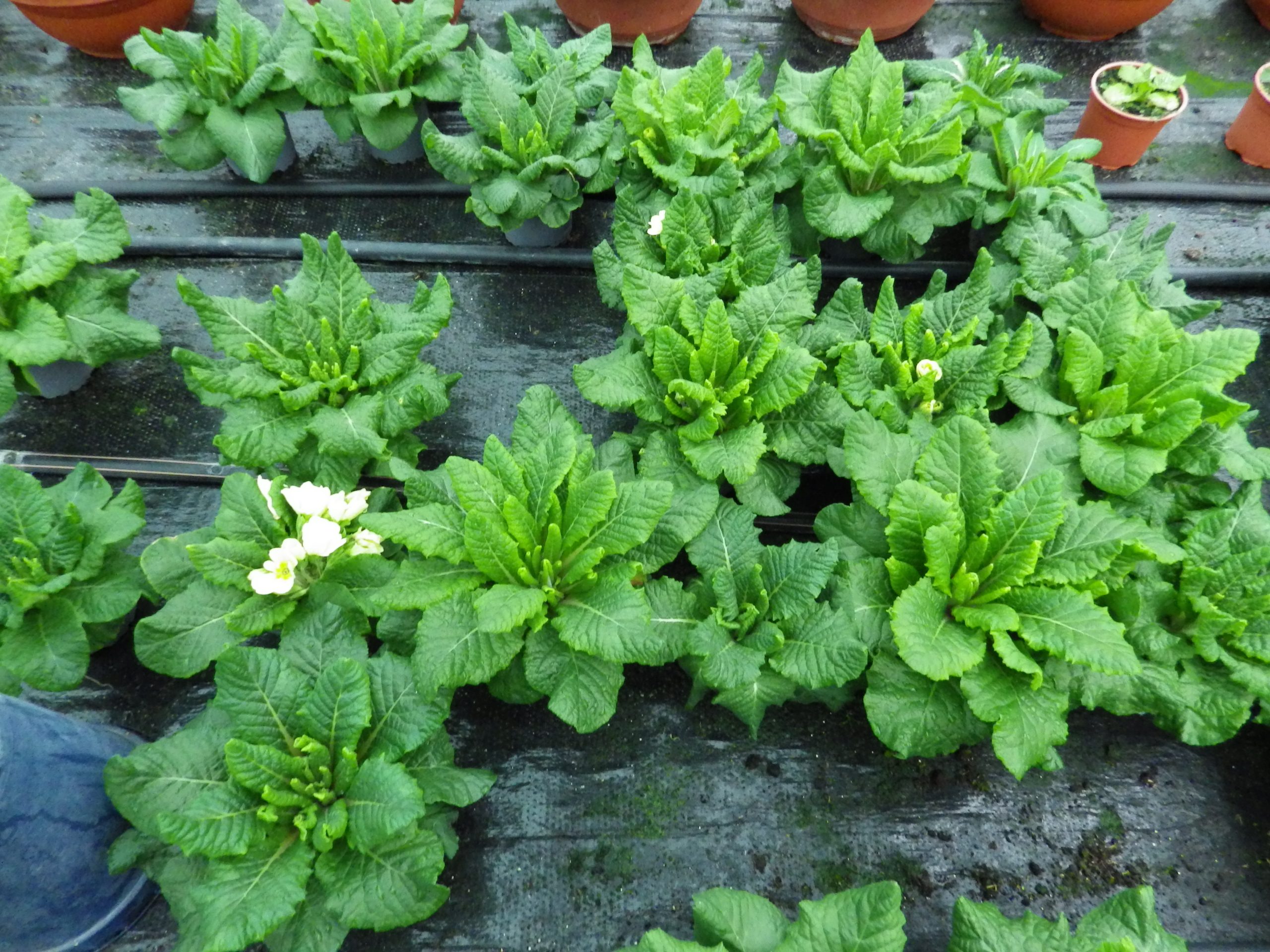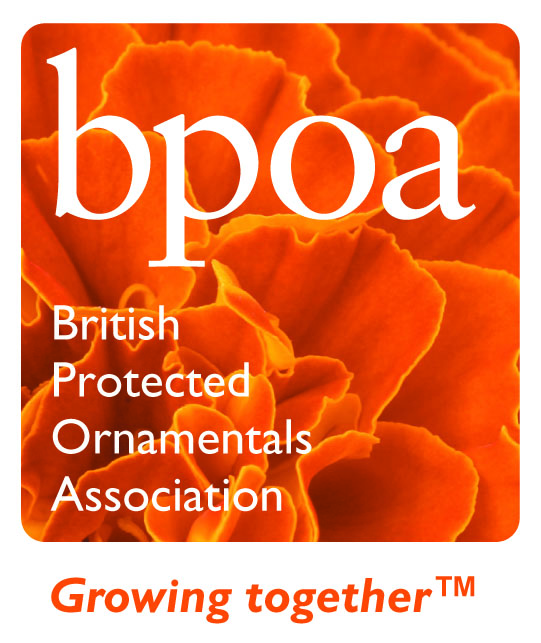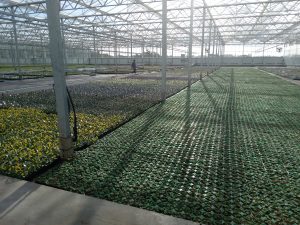Primrose 10.5cm potted wk 38 2021
We used Candy Vanilla from Rudy Raes, we knew it was a hungry variety
Peat free compost (coir & wood fibre) compared to standard peat & wood fibre (January SAP results)
Grown cool vent setpoint 10C Heating 1C
Grown in shuttles for 6-8 weeks then spaced out onto bench with capillary matting
Water from borehole with nitric acid dosing, conductivity 800 uS/cm, we use a continuous low-level feed 3-400 uS/cm 15-5-30 at ever watering.
Results
November
The primroses had been spaced, the foliage covered the pot and looked healthy enough, however, the SAP result showed that there were some deficiencies. The weather was cold with some overnight frosts and mainly dull. The compost was fairly wet so we couldn’t hand water them. We applied 2 lots of bio 20 as a fairly coarse spray 7 days apart at 1500 uS/cm.
December
We could now see chlorosis in the leaves of some varieties, that are prone to it, Mojito for instance. The weather was cold with very little sunshine. the compost was still fairly wet so we applied 3x bio 20 at 2500 uS/cm. By the end of the month, we could see the chlorosis was disappearing in the varieties that show it. At the end of December, the temperatures picked up dramatically going from 2C to 14C in one day. The Candy Vanilla was still looking okay and was in bud by the end of December
January
The SAP results showed we had improved the nutrients and now we were thinking temperatures had played a part in the Chlorosis, when it is very cold the compost temperature can be much lower than the leaf temperature, perhaps the roots couldn’t supply the leaves. The Vanilla now looked much greener and started to flower in January.
Peat free results over the 3 months with a standard compost in January
| primrose vanilla peat free | |||||
| peat free | peat free | peat free | peat | ||
| November | December | January peat free | January peat | Peat free difference | |
| ph | 123.96 | 126.23 | 125.28 | 126.23 | -0.950000000000003 |
| nitrate n | 135 | 200 | 200 | 132 | 68 |
| ammonia n | 135 | 200 | 200 | 132 | 68 |
| Phosphorus | 200 | 200 | 200 | 200 | 0 |
| Potassium | 167 | 200 | 200 | 200 | 0 |
| Magnesium | 53 | 99 | 81 | 65 | 16 |
| Sulphur | 29 | 56 | 44 | 50 | -6 |
| Calcium | 19 | 51 | 44 | 38 | 6 |
| Sodium | 54 | 137 | 135 | 108 | 27 |
| Chlorine | 11 | 23 | 23 | 23 | 0 |
| Magnesium | 46 | 158 | 154 | 169 | -15 |
| Boron | 79 | 175 | 180 | 160 | 20 |
| Copper | 46 | 85 | 95 | 81 | 14 |
| Iron | 30 | 95 | 56 | 45 | 11 |
| Zinc | 151 | 200 | 200 | 200 | 0 |
| Molybdenum | 13 | 60 | 40 | 16 | 24 |
| Aluminium | 81 | 81 | 81 | 81 | 0 |
From the SAP results, we could see some differences between peat and peat-free so we had a look at the roots.
Primrose Vanilla Comparison
Both batches of primrose vanilla have received the same soluble fertiliser and foliar regime.
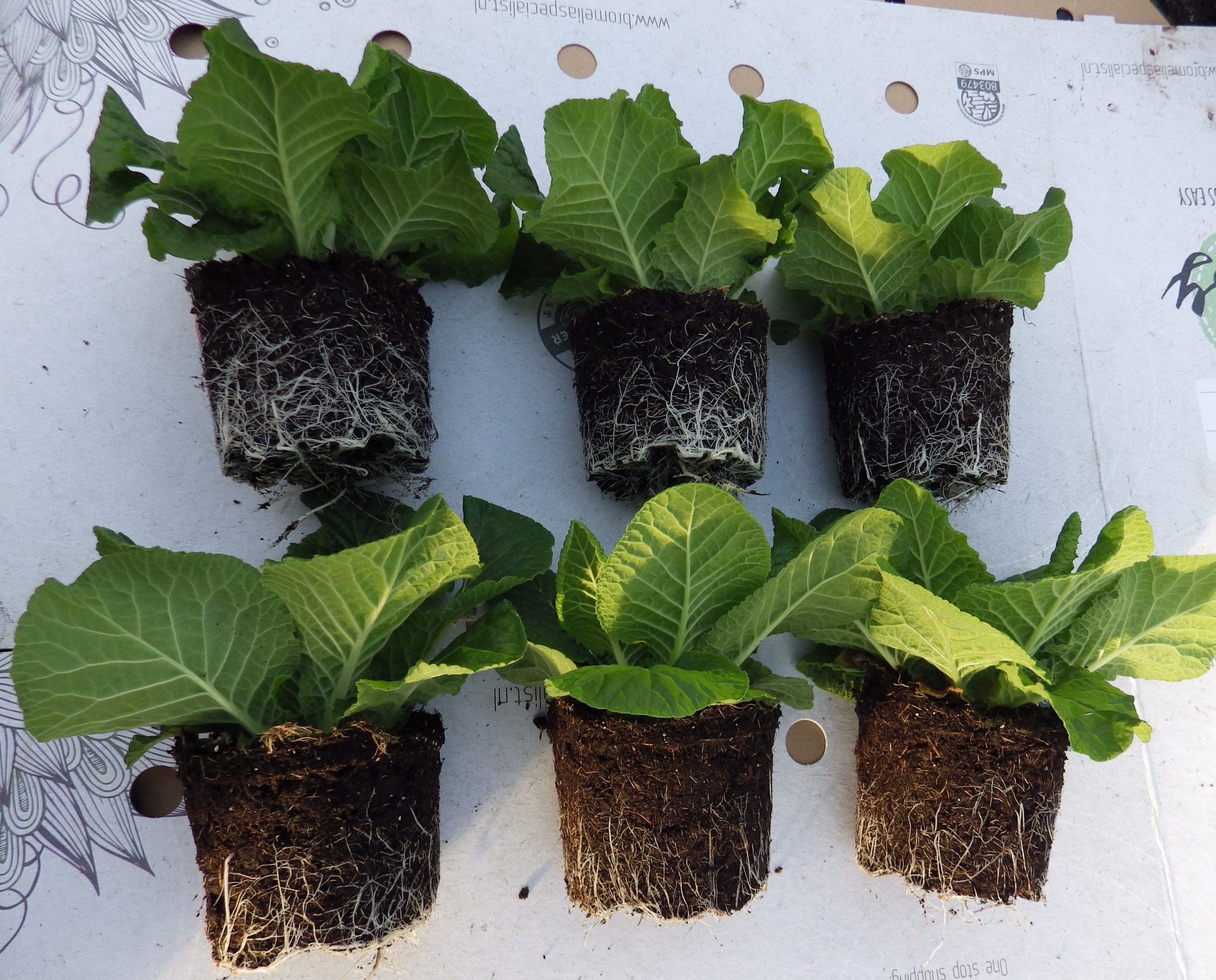
The top row is standard peat/wood fibre compost, The lower row is peat-free coir/wood fibre mix

This is the standard peat/wood fibre compost
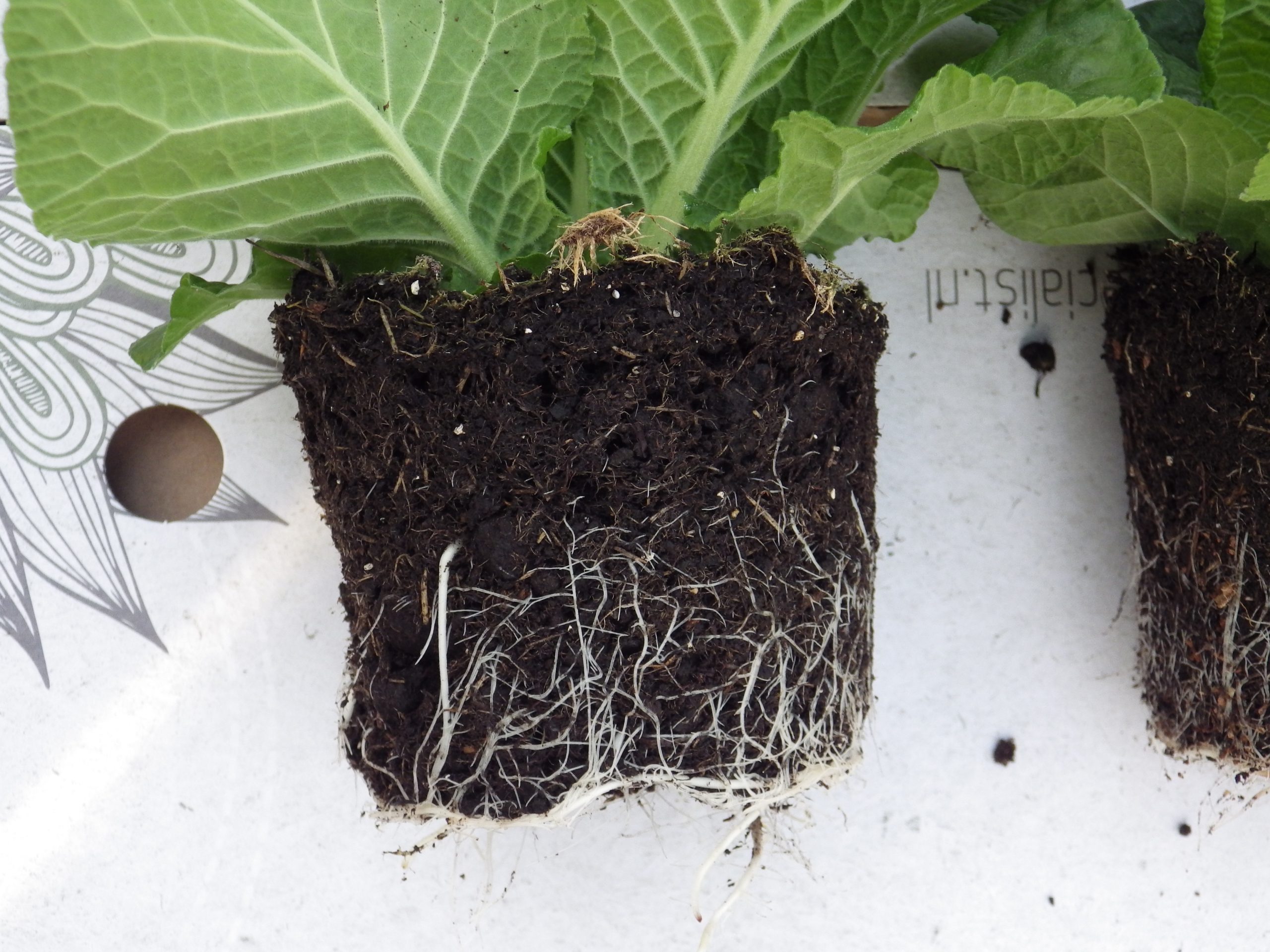
This is the peat-free, it seems to have a different root development, with very little root development near the top
Summary
Both batches of vanilla looked the same visually and flowered at the same time, however, we have noticed a fair proportion of blind plants in the peat-free batch and none in the standard compost
